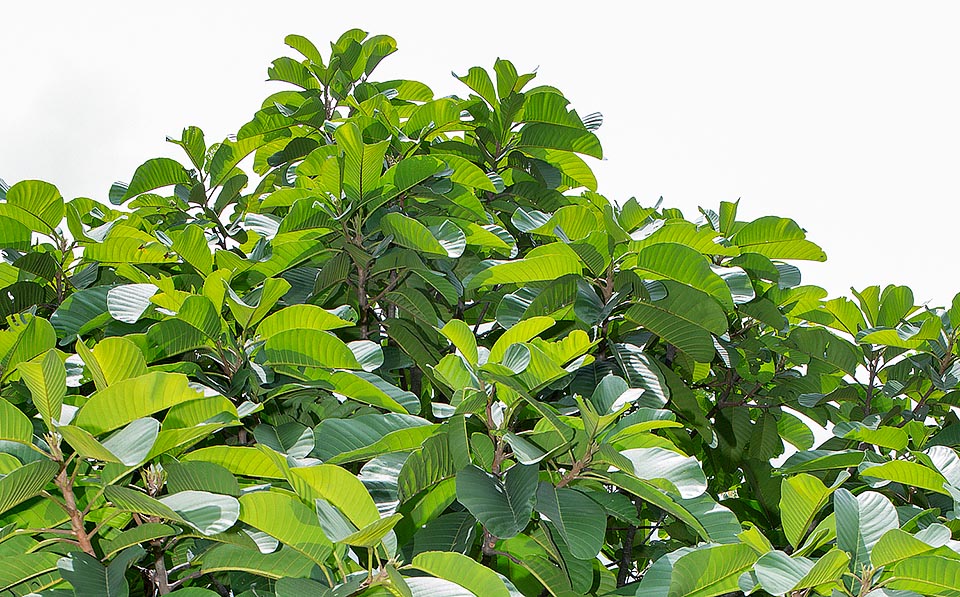Family : Malvaceae

Text © Pietro Puccio

English translation by Mario Beltramini

In the primary pluvial forests Neesia altissima reaches 40 m with trunks of more than 120 cm of diameter © Giuseppe Mazza
The genus is honoured to the German botanist and pharmacologist Theodor Friedrich Ludwig Nees von Esenbeck (1787-1837); the specific name is the absolute superlative of the Latin adjective “altus, a, um” = high, with obvious reference.
Common names: ki bengang (Java); bengang, durian (Indonesia); apa-apa, bengang, bungal, dendulang, durian daun, durian tupai, punggai (Malaysia); duyin (Myanmar); si bengang (Sumatra); chang baek (Thailand).
The Neesia altissima (Blume) Blume (1835) is an evergreen tree that may exceed the height of 40 m, in the old specimens in nature, with erect trunk, of up to more than 1,2 m of diameter, with slightly grooved bark of greyish brown colour. The leaves, on a 10 cm long petiole, are alternate, simple, obovate-oblong with obtuse or retuse apex, entire margin and prominent pinnate veins, coriaceous, 25-30 cm long and 10 cm broad, of intense green colour above, green grey and pubescent below. The leaves in the initial phase of the growth are protected by two linear-lanceolate stipules, 2-4 cm long, deciduous. Corymbiform inflorescences at the axil of the fallen leaves bearing small flowers, of 1-1,5 cm of diameter, enclosed in bud by a deciduous epicalyx. Cup shaped calyx and corolla with 5 petals precociously deciduous, oblong with obtuse apex, white-pinkish, and several stamens merged at the base. The fruits are ovoid-pentagonal capsules with pointed apex, woody, externally covered by pyramidal tubercles of dark brown colour, 15-20 cm long and 10-15 cm broad, dehiscent at the apex in 5 valves, containing numerous black ellipsoid seeds with yellow aril; the inner walls are thickly covered by irritating hairs of orange colour.
It reproduces by seed in draining loam, fertile, maintained constantly humid at the temperature of 24-26 °C. Species rarely cultivated outside the origin zones that would deserve a better diffusion thanks to the ornamental foliage, suitable for parks and large gardens of the tropical and subtropical climate zones. It requires an exposition in full sun or sligthly shaded, in particular during the initial phase of growth, and soils kept almost constantly humid.

The 25-30 cm long coriaceous leaves and the fruits have medicinal virtues. The wood, light and easy to work, is known commercially as “durian” © Giuseppe Mazza
The fruits are locally utilized in the traditional medicine as diuretics and, together with the leaves, in treating the gonorrhea.
Synonyms: Esenbeckia altissima Blume (1825).
→ To appreciate the biodiversity within the MALVACEAE family please click here.
